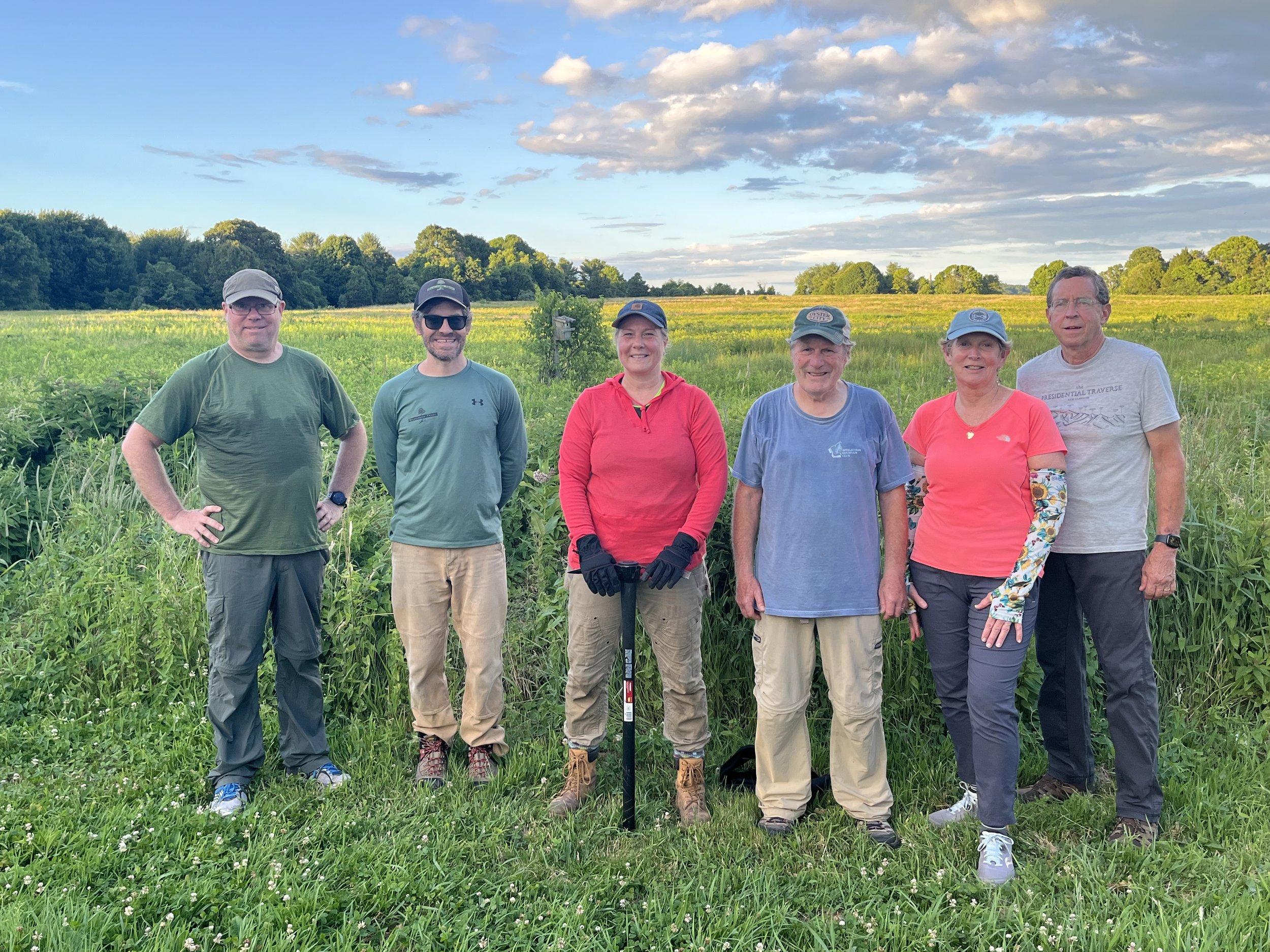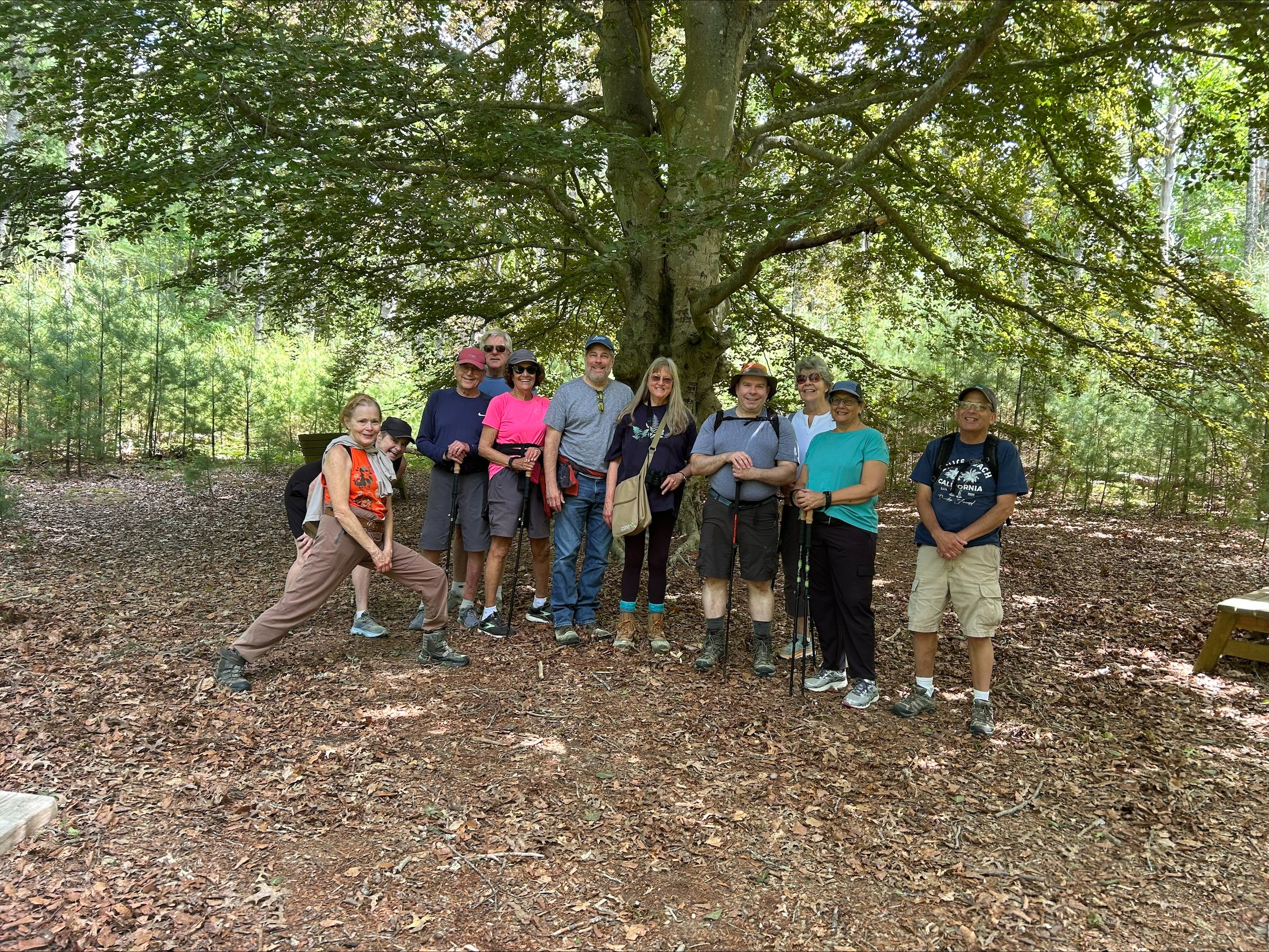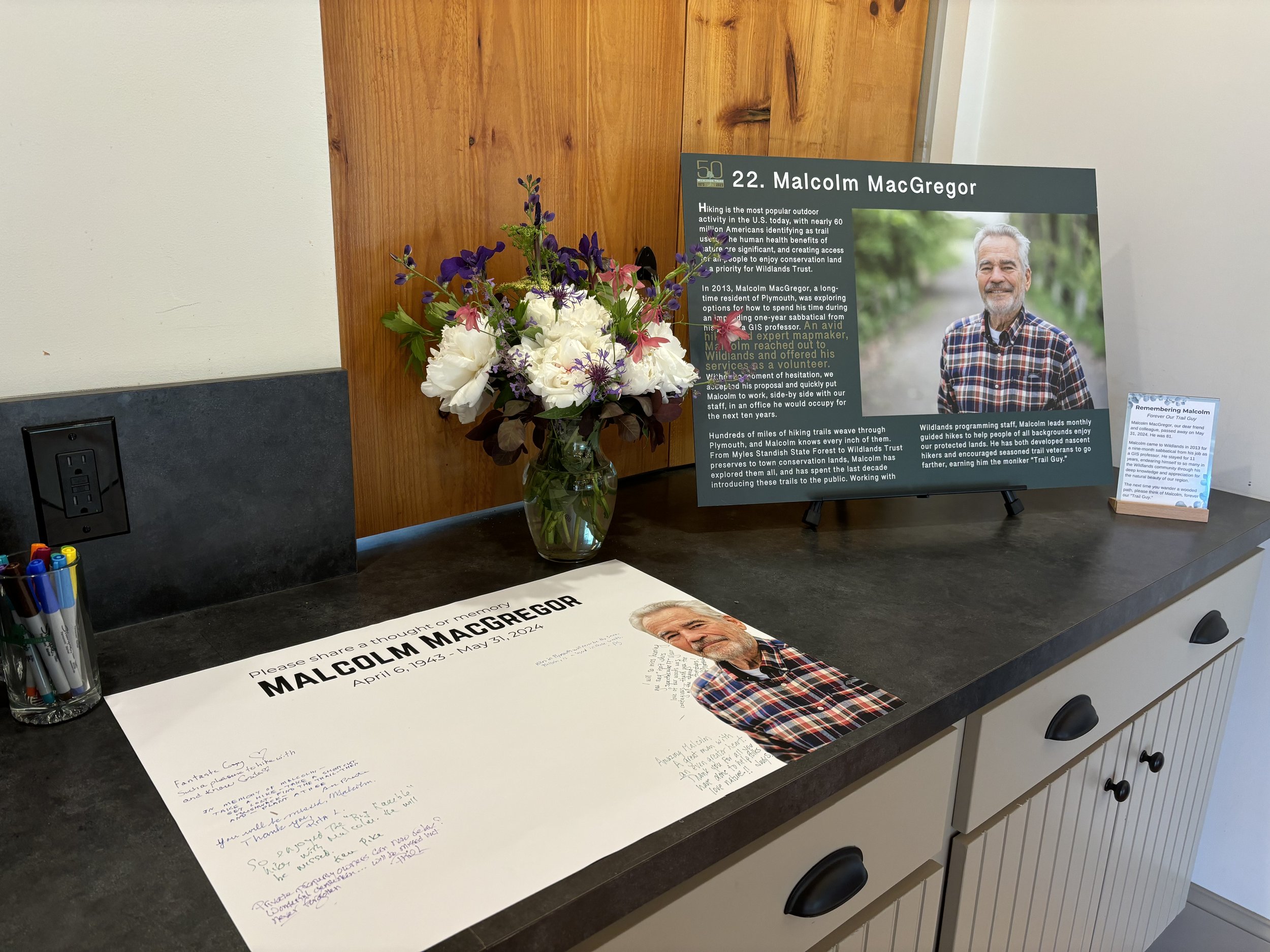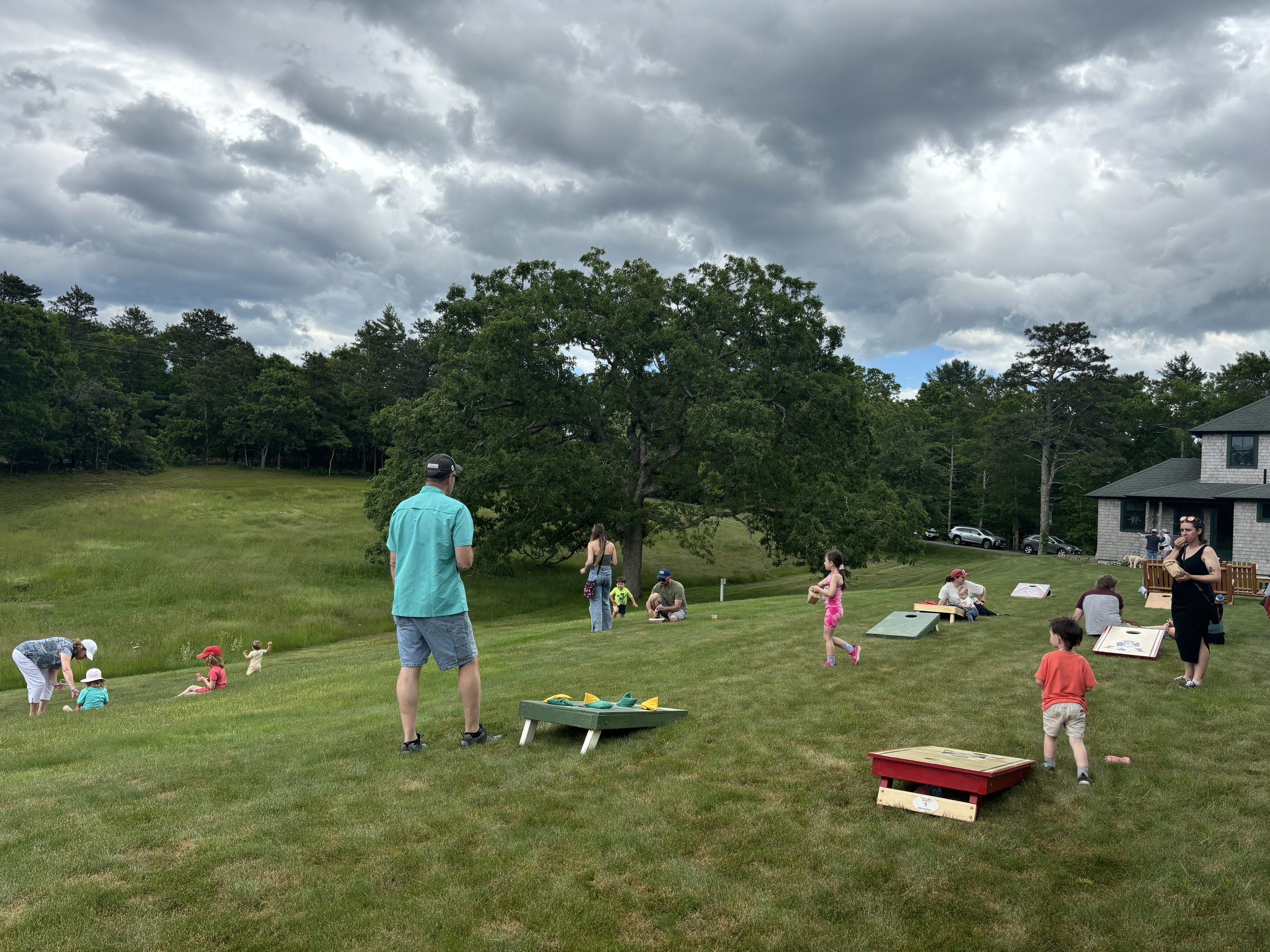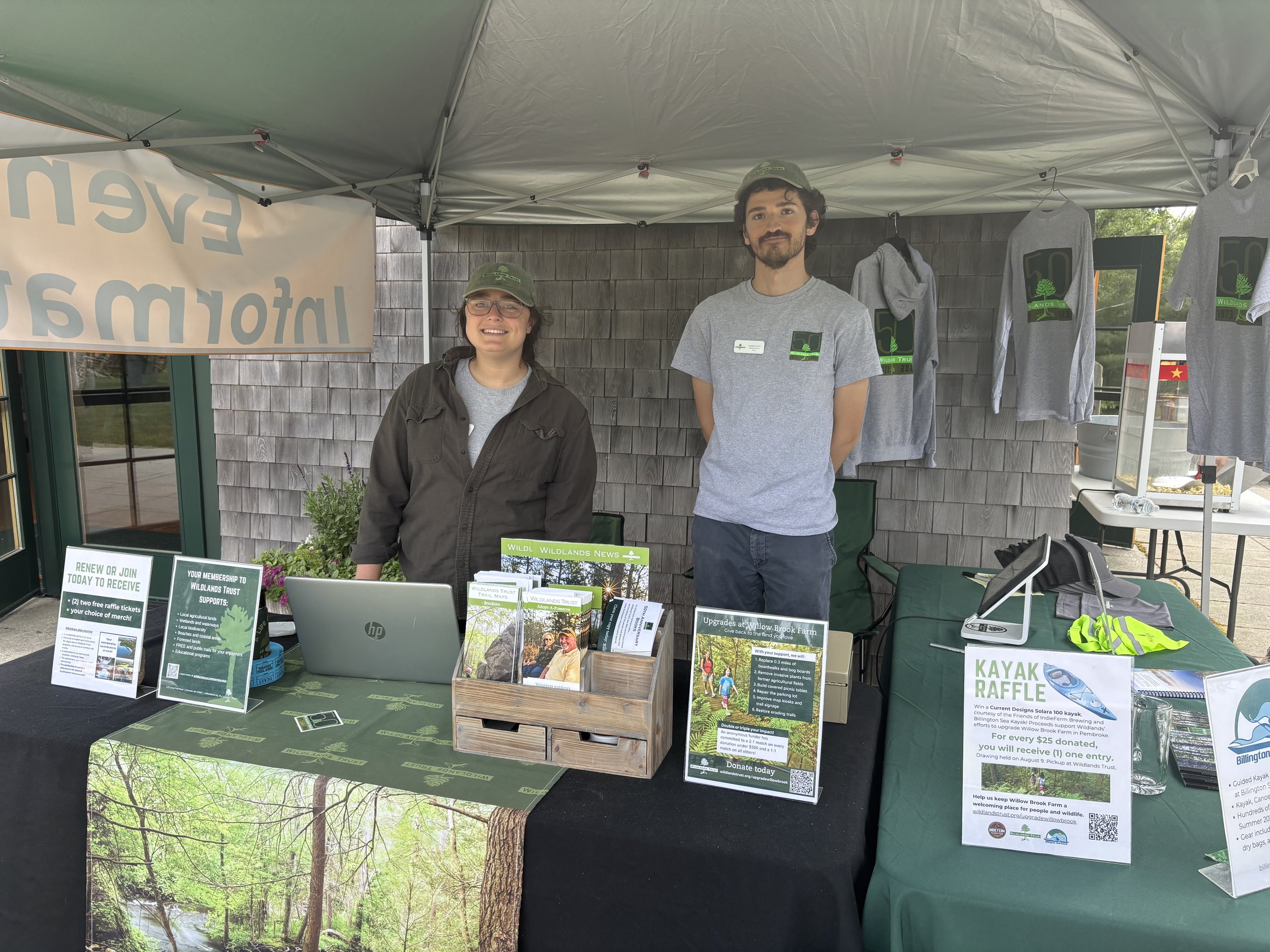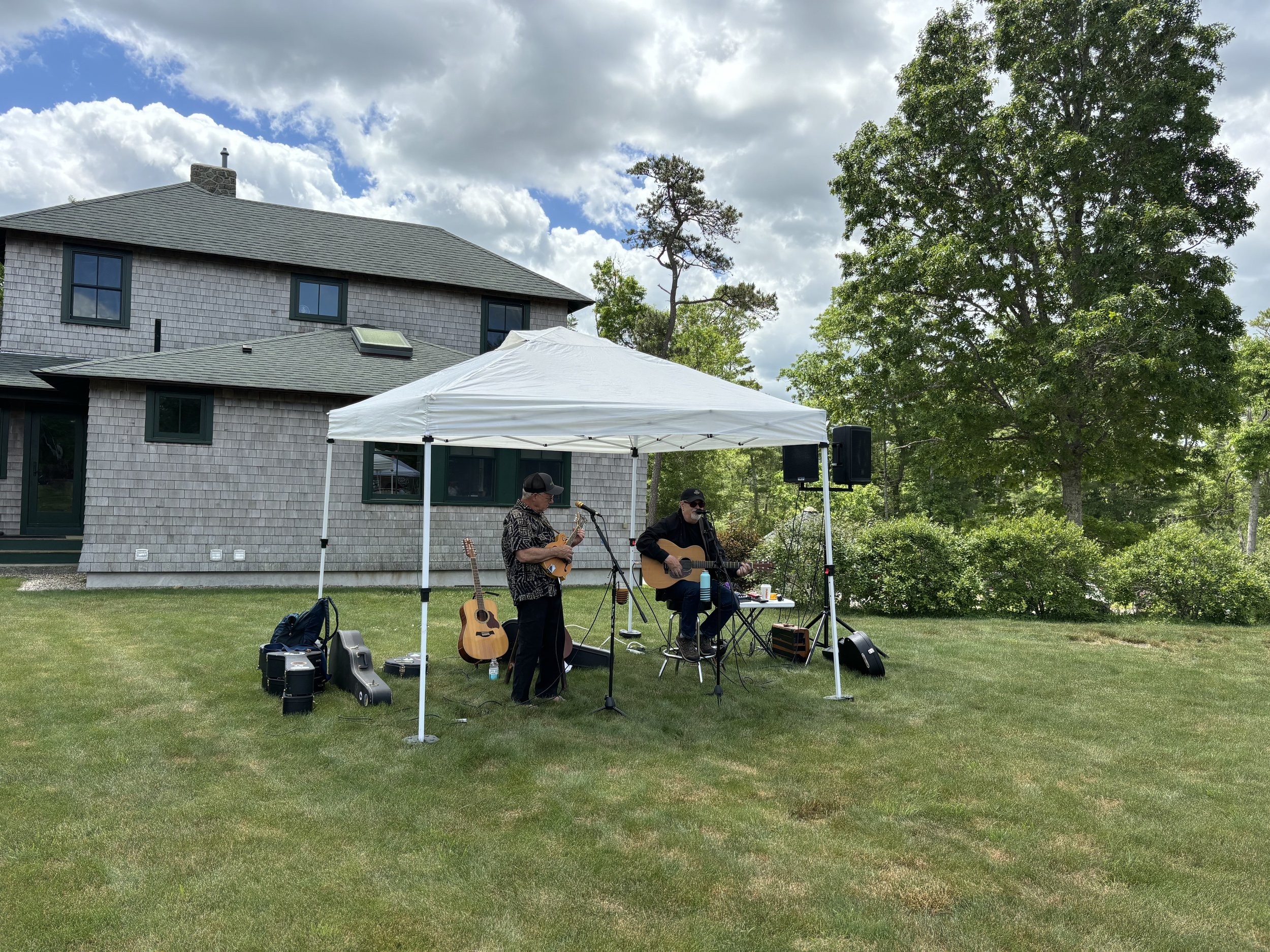Sylvester Field in Hanover. Photo by Jerry Monkman.
By Thomas Patti, Communications Coordinator
Summer is a beautiful time to explore Southeastern Massachusetts. It’s little wonder that birds and humans alike migrate thousands of miles each year to settle in our region during the warmest months. Flowers and their pollinators burst with color. Sunlight streams through shady forest canopies and over rolling, grassy fields. Cool water runs through coastal rivers, ponds, and streams, offering vital refuge to fish, reptiles, and people.
But summer also presents health and safety risks to visitors to our region’s trails. Read on to learn how simple precautions can keep you and your loved ones hiking, paddling, and enjoying nature all summer long.
Beat the Heat
Tucker Preserve in Pembroke. Photo by Jerry Monkman.
Climate change has made summer heat waves longer, hotter, and more frequent—and models predict these trends will continue through much of the century. Hiking in high heat requires extra planning and attention to your body.
Pack water and drink it often. Water can feel cumbersome to bring along on a hike, but any inconvenience pales in comparison to an on-trail health emergency. Even short hikes can become dangerous without early-and-often water breaks. How much water should you expect to drink? Consult Camelbak’s Hydration Calculator to find out. Also make sure to stay hydrated in the days leading up to your excursion; otherwise, dehydration can set in sooner and more severely on the trail.
Prevent overhydration by keeping salt levels balanced with electrolyte-packed sports drinks, salty snacks, or salt tablets.
Monitor for symptoms of heat illness. Fatigue, weakness, nausea, dizziness, and muscle cramps can all signal heat exhaustion. Ignoring these signs can lead to heat stroke, which in turn can lead to loss of consciousness and even death. If something doesn’t feel right, turn around. The trail will be there next week.
Know your limits. Think twice about hitting the trails amid extreme heat. Check the forecast before you head out, as temperature and precipitation can change rapidly during the summer. Avoid hiking during the hottest part of the day, often in the afternoon. If you’re on the fence about heading out, err on the side of caution and plan for another day.
Cortelli Preserve in Plymouth. Photo by Jerry Monkman.
Slay the Rays
Protect your eyes and skin from sun damage by wearing UPF clothing, a wide-brimmed hat, and sunglasses. Apply sunscreen of SPF 30 or higher before and during your hike. These precautions can save you from temporary afflictions like painful sunburns and eye irritation and chronic, severe, and even life-threatening conditions like vision loss and skin cancer.
Ditch the Ticks
Unusually warm winters in recent years have caused local tick populations to surge earlier in the season, with consequent increases in Lyme Disease and other tick-borne illnesses. Check yourself for ticks daily, as well as during and after outdoor excursions. Check your dogs, too, as ticks lodged in their fur can make them sick and take up residence inside your home. Remove any ticks on you or your loved ones with tweezers. Talk to your doctor if you develop a rash at the site of the bite.
Minimize your chances of encountering ticks by staying on the center of the trail, away from overgrown vegetation, and by wearing long-sleeved clothing, with your pants tucked into your socks. Wearing light-colored clothes can make it easier to detect ticks. To repel ticks, apply DEET to exposed skin and permethrin to clothing.
Leaves of Three, Let It Be
Poison ivy. Photo by Jerry Monkman.
Poison ivy proliferates in the summer months, so keep an eye out for its glossy three leaves along trail edges and on vines up tree trunks. If you are visiting a trail with a known abundance of poison ivy, wear a long-sleeved shirt and pants to protect yourself from painful rashes.
Share the Trail
When trail visitation peaks during summer months, conflicts can arise among different user groups. Hikers should stay on the lookout for bikes, which can move at high rates of speed around tight corners with limited visibility.
This is true for both mountain biking, an authorized use of many Wildlands trails, and dirt biking, which is prohibited on all Wildlands property. Dirt bikes create safety hazards and disturb sensitive ecosystems by causing erosion on trails. Enforcement is challenging, however, as some dirt bikers may ignore posted signage and physical barriers. So, hikers should maintain a watchful eye and listening ear. Even when you have the right of way, get out of the way of dirt bikers to avoid collisions and serious injury. Learn more about off-highway vehicle regulations and report violations here.
Willow Brook Farm in Pembroke. Photo by Jerry Monkman.
Ready to get out there? Explore our trails across Southeastern Massachusetts at wildlandstrust.org/trails. Stay safe and have fun!
Source: “7 Essential Tips to Hike Safely This Summer.”AAA. April 2024.






